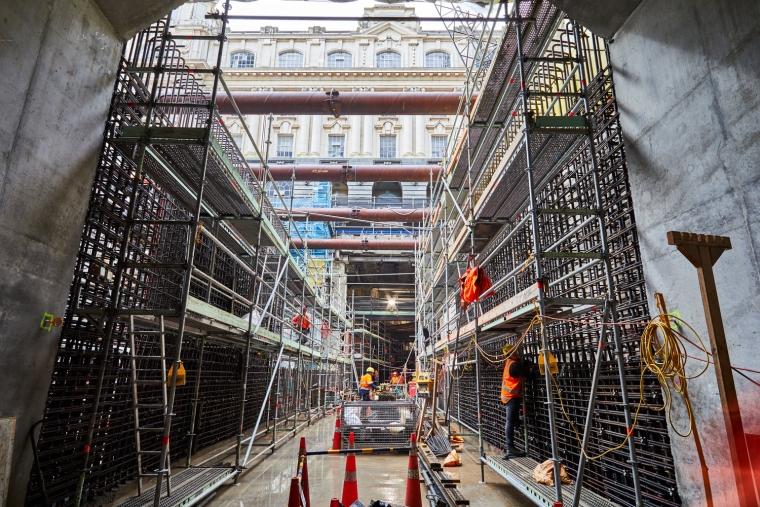
The New Zealand Infrastructure Commission says natural disasters cost New Zealand more as a share of Gross Domestic Product (GDP) than any other country in the Organization for Economic Co-operation and Development (OECD) except Chile.
A new report out of the Commission looking at how insurance and investment can help prepare infrastructure for future natural hazard events found NZ has experienced annual reported losses averaging nearly 0.6% of GDP from 1960 to 2022, due to damage to homes, businesses, and infrastructure.
NZ’s losses rank second, behind Chile where annual expected losses from natural hazard events in that same timeframe came in at almost 0.8% of GDP.
In comparison, other OECD countries had losses of around 0.3% rate or lower as a share of GDP.
The Commission’s report says infrastructure needs to be prepared for a changing climate as the cost of replacement infrastructure is rising in response to the increased frequency of natural hazard events.
Peter Nunns, the Commission’s General Manager of Strategy, says that since 2012, NZ has seen at least $10 billion in infrastructure rebuilding costs from two large earthquakes and two storms.
“And that doesn’t of course include the impact of these events on people’s lives and businesses or the economy,” he says.
“On an inflation-adjusted, per-person basis, public infrastructure is now worth 70% more than it was in 1990. So, the cost of replacing it after a natural disaster is rising at the same time as the likelihood of a disaster is rising,” Nunns says.
The Commission’s report found infrastructure investment can make infrastructure more resilient and able to adapt to changing risks, which in turn can bring down the cost of insurance.
Nunn says in addition to “smoothing out” the costs of responding to natural hazards, insurance can also help infrastructure providers make better decisions about when and how to reduce risk and minimise costs.
However, NZ has an incomplete picture of the natural hazards the country faces and the risks posed for NZ’s infrastructure. The last time a review was undertaken of NZ’s insurance coverage for public assets was back in 2013 which revealed less than half of public assets had insurance cover.
“This is challenging, as our research shows that, in addition to helping to smooth out the costs of responding to natural hazards, insurance can also help infrastructure providers make better decisions about when and how to reduce risk and minimise costs,” Nunns says.
“Risks change over time. A risk management decision made yesterday might not be the best decision for tomorrow. It’s important that infrastructure providers consider this in their long-term asset management planning.”
The Commission’s report found better natural hazard risk at the two infrastructure levels – infrastructure provider level and national level – would enable better decision-making.
Infrastructure providers at a local level need to be able to assess the costs of their natural hazard risk and the costs and benefits associated with actions to respond to that risk, the report says, while at the national level, the government needs information on the total magnitude of risk to infrastructure.
“To manage risk well, infrastructure providers need to have a good understanding of their assets and the risks to which they are exposed. They will also need the capability to assess their options and optimise their response to risks from natural hazards. However, at a national level, we lack comprehensive and consistent hazard data for providers to use to assess their risk,” the report says.
The lack of consistent natural hazard data across the country was something that also came up during Parliament’s Finance and Expenditure Committee (FEC) inquiry into climate adaptation last year.
The cross-party committee was tasked by Climate Change Minister Simon Watts in May 2024 to decide how the country mitigates the risks and costs of severe weather events as well as developing objectives and principles for a climate adaptation framework.
The Committee’s Report of its inquiry findings, which was released in October, found NZ’s current system of managing natural hazards and climate risks under stress.
The potential costs associated with climate adaptation were described as “seriously uncertain” and the Committee was clear the Government’s framework would need to clarify what parties paid for investment into climate adaptation.
The Committee has a slew of framework recommendations in the report which include the need to improve information flows about climate risks and responses and achieving a balance between central government leadership and community-led approaches.
3 Comments
One of my biggest concerns is the capability of the healthcare system to respond to a major disaster eg. The ‘Big One’ in Wellington. Given there’s absolutely no fat or contingency in the system, I think this is a terrifying prospect. Noting that the Big One would be much more damaging than the Christchurch earthquake
Thats because it costs twice as much to do anything in NZ, and takes twice as long an everywhere else. The problem is not the disasters its the costs we all just put up with and do nothing about.
Who would want to contemplate a post-quake re-build in Wellington under its current City Council?
Good grief …..
TTP

We welcome your comments below. If you are not already registered, please register to comment.
Remember we welcome robust, respectful and insightful debate. We don't welcome abusive or defamatory comments and will de-register those repeatedly making such comments. Our current comment policy is here.